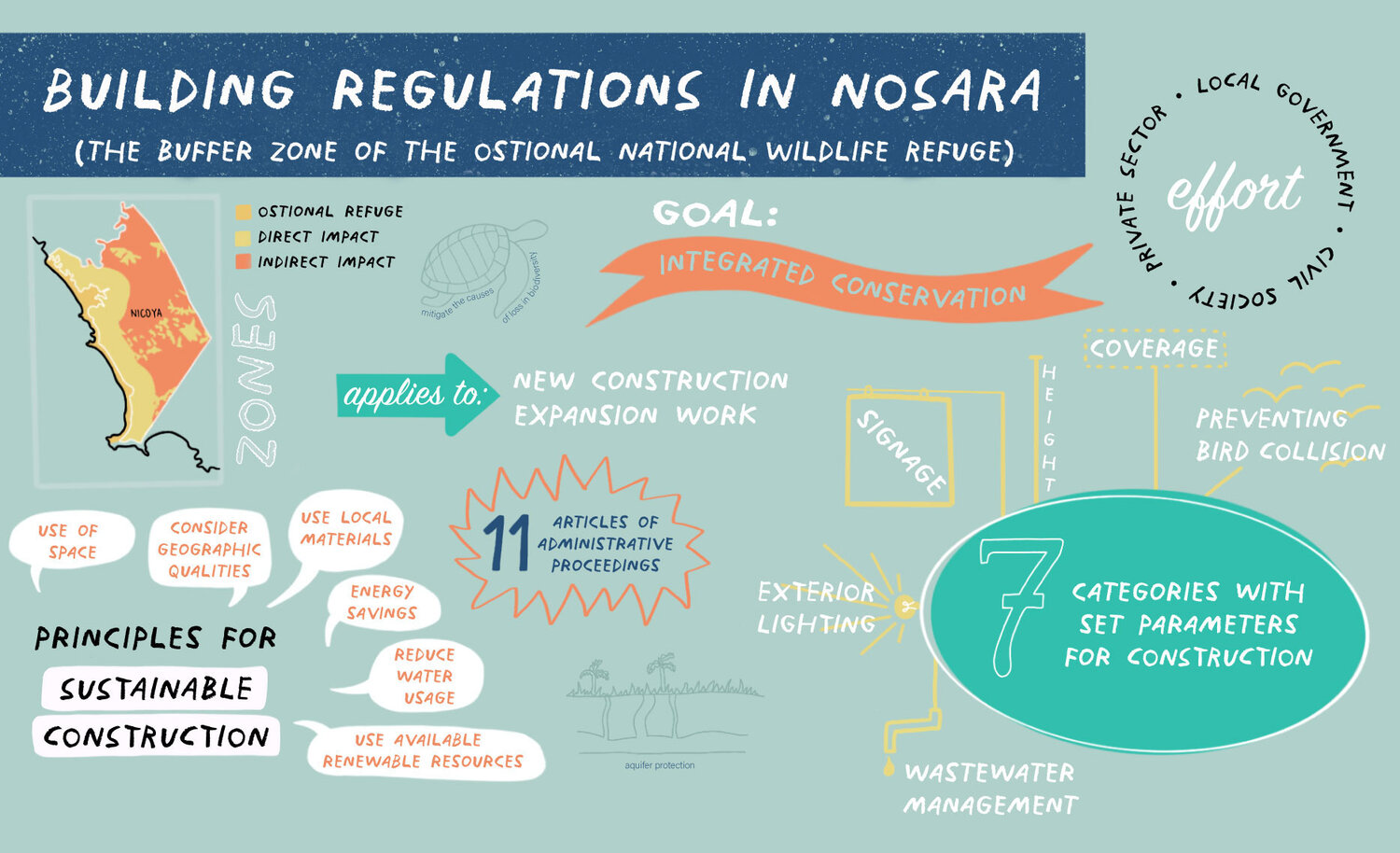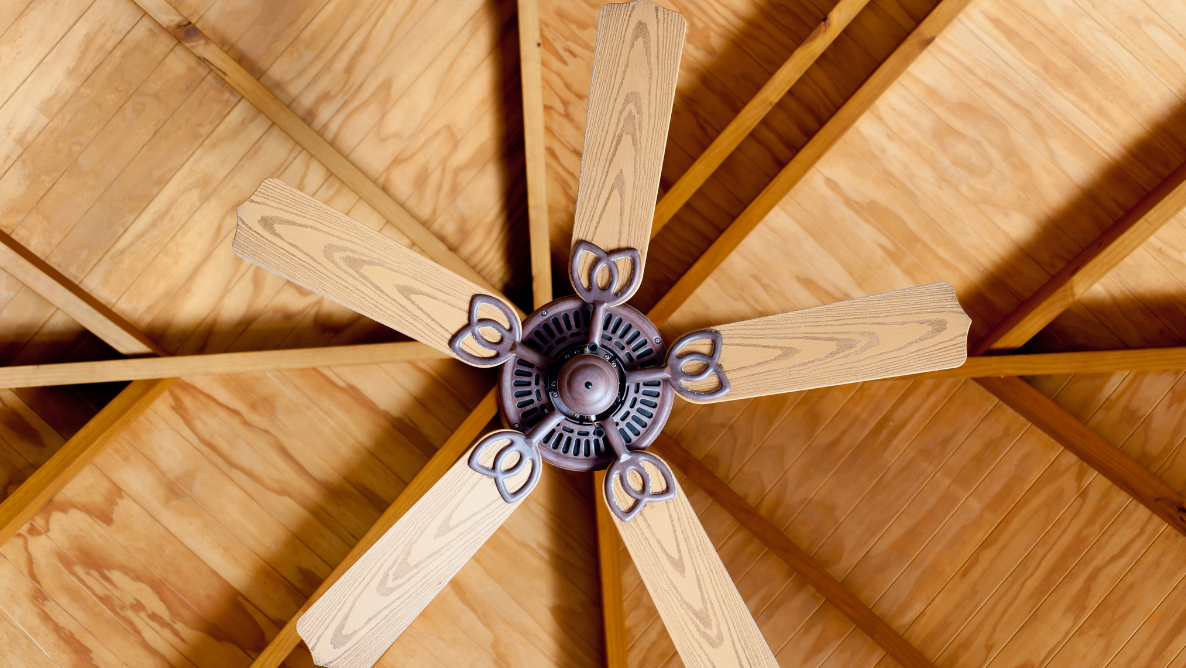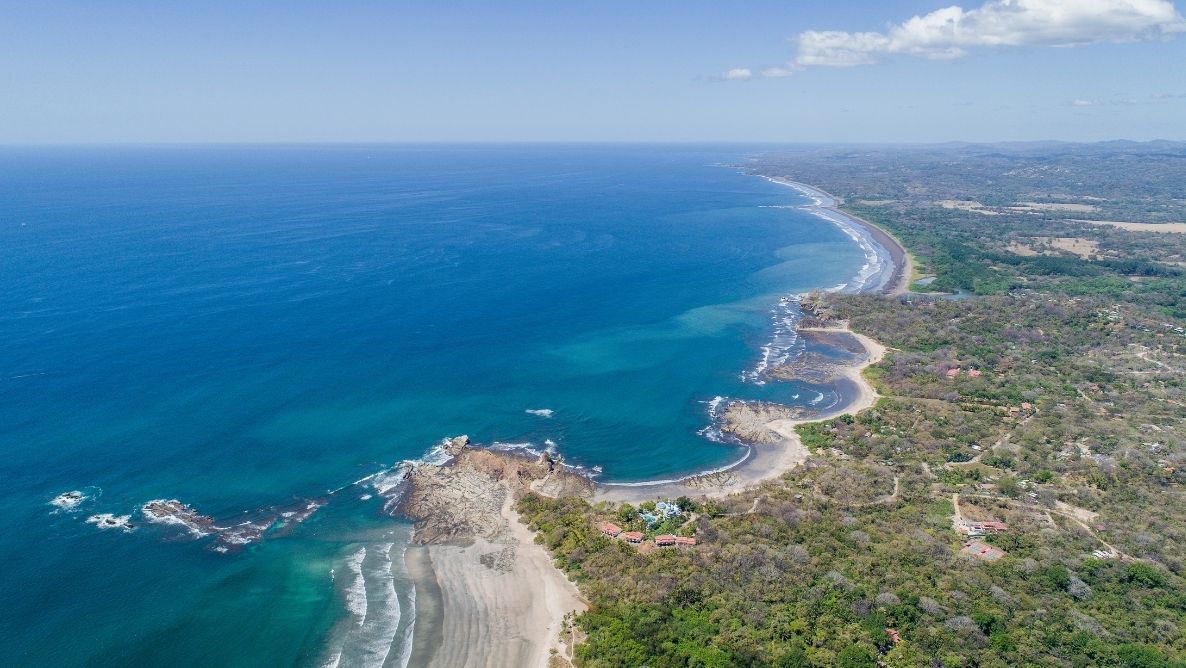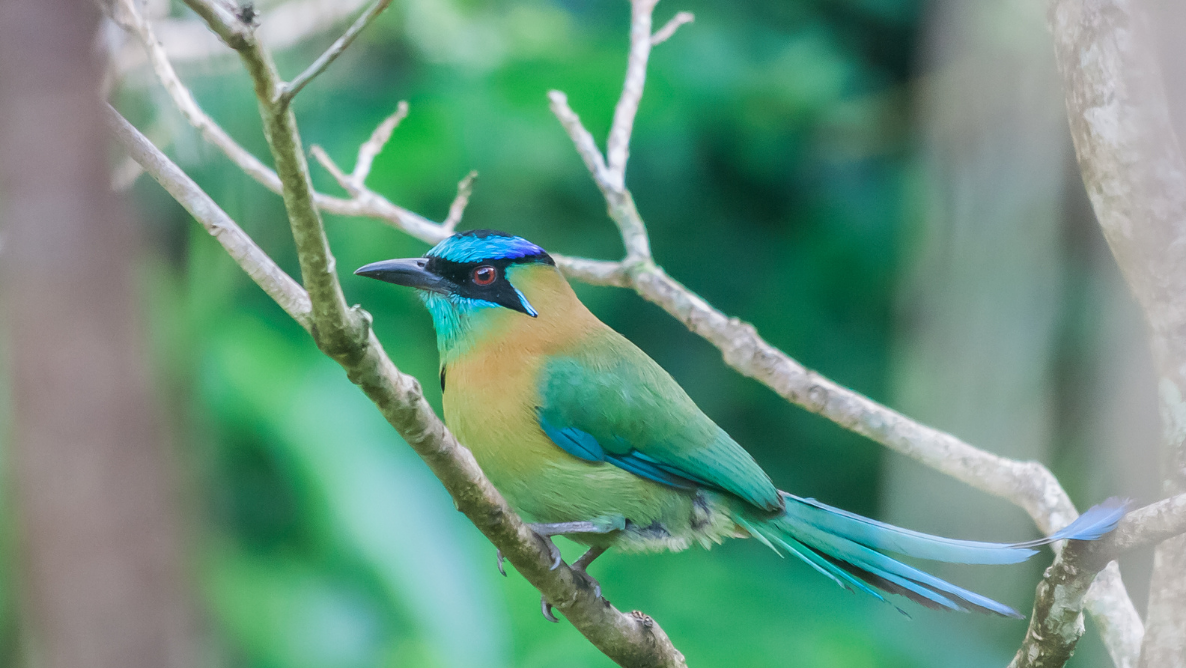If you are someone who has the dream of wanting to build in Nosara, or better yet, has bought a property and is ready to start with the design, we would like to offer you seven tips to inform your decision making.
On June 1st, the Contentious Administrative Court suspended the construction regulations for the entire buffer zone of the Ostional National Wildlife Refuge; these regulations were intended to protect wildlife and aquifers in Nosara. Currently, these regulations are on hold waiting for the Court to conclude the merits of the process.

At the Association we are supporting the Municipality of Nicoya in the defense of the regulations. We also want to empower all the residents of the community who want to build to analyze the culture of the place, respect the biodiversity that surrounds them and try to minimize the impact of their project. Currently Nosara is on the radar of many investors and the media – who position us as a booming tourist destination. At the NCA we believe that we can be more than that: we trust that we are building together a community model in which development and growth goes hand in hand with nature. We are #ModeloNosara. We can be a unique place in Costa Rica and in the rest of the world.
To provide you with valuable information, we interviewed three architects: Donald Loría from the architectural firm Prendas Loría, Evangelina Quesada from Salagnac Arquitectos and the Sphera Sostenible and LOOP team, to help us with these tips.
The three companies confirmed to the NCA that the regulations never stopped them from any type of project and that the measures are very viable to comply with, in addition to guiding Nosara towards a more sustainable development.
They also agree that the Nosara community is being a great example to the world of sustainable architecture, but that more work is needed to inform people who are visiting the area for the first time.
We will also be sharing projects from these firms on how they adapted to the regulations and how they implemented other strategies to reduce the constructive impact in Nosara, as an inspiration to others.
(If you want to share with us any other construction project that complies with the regulations and can serve as inspiration, please write to us at the email roberto@nca.cr )
Now let’s start with the seven tips:
# 1 Take advantage of natural ventilation

Have you ever wondered how many air conditioners your home really needs? For Evangelina this is one of the most difficult issues to explain to clients, since most come from other countries where they cannot imagine living without air conditioning; However, for the architect there are many strategies to have natural ventilation without the need for air conditioning. They include air flow analysis, the proper use of windows and the height of the building, among other factors.
According to Evangelina, in many of the architectural projects it is unnecessary to install air conditioners in social areas such as kitchens and terraces, This would achieve energy savings, reduce the carbon footprint and provide benefits for people’s health related to the skin and respiratory system.
“How interesting could it be that people see how in Nosara houses do not use air conditioning in social areas and that people understand why. Let them know that it is because we live in contact with nature, because the climate allows it or because we want to consume less energy ”, says Evangelina.
# 2 Don’t point lights at the beach
According to the Sphera and LOOP team, if the project has exterior lights, it is important that the lights are not directly visible from the beach to avoid light pollution that affects the nesting process of turtles. They can also negatively impactact the life and dynamics of nocturnal animals. Downward-pointing lights can be designed to prevent glare from the sky, which also allows you to enjoy the starry skies. In addition, timers can be installed so that after a certain hour of the night they turn off, as well as motion sensors so that they turn on only when someone is present, and thus, they do not cause continuous interruption.
# 3 Know the identity of the place

What characterizes the architecture of the place? For Donald that is one of the first questions that anyone should ask before building, since the architecture of the place always speaks about what works best to adapt to the climate. For the architect, learning about the culture of the place can bring benefits to understanding what is the best ventilation and how the lighting is best used. At the same time discovering which are the native plants of Nosara, to use them in gardens, so that they adapt to long summer seasons and do not need much water, in addition to not planting plants from other areas that alter ecosystems.
# 4 Make better use of wastewater
For Evangelina a good practice is to separate all the wastewater in two tanks. This means that it is important not to mix the black water with the gray water in the same tank (the gray is the water that is left over from the shower, washing machine, sink), The gray waters can be treated with sand filters. or a less complex treatment system than that used for sewage. These waters could be used for irrigation.
She also told us that from the design phase it is important to visualize how to take advantage of the slopes of the property where it is going to be built. These treated waters can work for irrigation, but without having to use electricity in a system of pumping, but rather with gravity. In this way, the use of water is maximized without the need to increase energy use.
# 5 Protect the birds

One of the inconveniences that the residents of Nosara encounter when placing large windows is that they cause birds to collide with the glass. According to the Sphera team, to avoid bird collisions, glass with low reflectivity can be selected, as well as using sun visors or films . Also at the design level, eaves can be incorporated into the structure to reduce the reflectivity of the glass. Another strategy is to plant plants directly in front of the windows and ensure that the windows are not continuous but have frames so that there is not a very large panel of exposed glass.
# 6 Use local products
Try to use materials purchased in Costa Rica, This will reduce the energy consumption used to transport the materials.
For Donald, using woods such as pochote or teak, which are produced in Costa Rica, have better results since they are woods that are adapted to the country’s climate. There is a risk in using other imported woods without knowing how they will react to the climatic conditions of Nosara. . They can also be difficult to procure when you need to do a repair.
# 7 Play with the topography
For Evangelina, a healthy practice that not all architects do before designing, is to carry out a topographic survey of the property on which it will be built. With this tool, the terrain is better understood, because the slopes are analyzed, the trees that exist are valued and, in this way, the design is adjusted to the terrain conditions. With this, the amount of earth movements is reduced and the soil and vegetation of the place are conserved more.
She explained that many developers make the mistake of creating platforms on the grounds, so that everything is flat and completely removing the trees.
